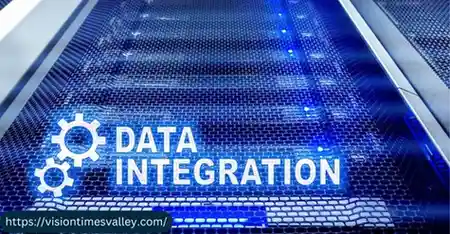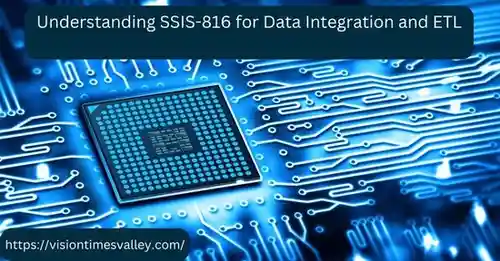Understanding SSIS-816 for Data Integration and ETL is an essential guide for professionals looking to master SQL Server Integration Services (SSIS) and its latest iteration, SSIS-816. This book thoroughly explains SSIS-816 capabilities in data integration and Extract Transform Load (ETL) processes. With the growing demand for robust ETL tools in enterprise environments, this book is timely and highly relevant.
1. Overview of SSIS-816
What is SSIS-816?
SSIS-816 is the latest version of Microsoft powerful ETL tool, designed to streamline data integration processes. Whether dealing with massive datasets or complex data transformations, SSIS-816 offers the tools and functionalities to manage these tasks efficiently.
Key Features
SSIS-816 is packed with features that set it apart from its predecessors. These include improved data flow capabilities, enhanced debugging tools, and more flexible integration options. The book does a great job of breaking down each feature, making it easy to see how SSIS-816 can meet the diverse needs of modern data environments, instilling a sense of confidence in its practicality.
2. In-depth Analysis of Data Integration Capabilities
Seamless Data Integration
One of the standout aspects of SSIS-816 is its ability to integrate seamlessly with various data sources. The book highlights how the tool’s connectors and adapters make it possible to pull data from any source—SQL databases, flat files, or cloud-based repositories. This flexibility ensures businesses can centralize their data processing tasks within a cohesive platform.
ETL Performance
Performance is crucial in ETL processes, and SSIS-816 does not disappoint. The book provides detailed insights into how SSIS-816 optimizes ETL operations, ensuring faster data processing times without compromising accuracy. This section includes practical tips on fine-tuning SSIS-816 settings for maximum efficiency, making it an invaluable resource for novice and experienced users.


3. User Experience
Ease of Use
The authors of Understanding SSIS-816 for Data Integration and ETL emphasize the tools user-friendly interface, which is designed for both technical and non-technical users. With intuitive drag-and-drop functionalities and a clear workflow layout, SSIS-816 reduces the complexity often associated with ETL tools.
Learning Curve
While SSIS-816 is relatively easy to learn, the book acknowledges a learning curve. However, it reassures readers that the time invested in mastering it will pay off significantly in the long run. The book’s step-by-step tutorials and real-world examples make this learning process smoother and more manageable, providing a sense of support to the audience.
4. Real-world Applications
Enterprise Data Integration
SSIS-816 is tailored for enterprise-level data integration tasks. The book illustrates this by showcasing how various organizations have leveraged SSIS-816 to streamline their data workflows, improve data quality, and enhance decision-making processes. These case studies offer a glimpse into the practical applications of SSIS-816 in the business world.
Case Studies
The book’s inclusion of case studies is particularly beneficial. They demonstrate how SSIS-816 can be customized to meet specific business needs, providing readers with actionable insights. From financial institutions to retail giants, the diverse range of case studies underscores the versatility of SSIS-816.
5. Comparison with Other ETL Tools
Advantages of SSIS-816
Compared to other ETL tools like Talend and Informatica, SSIS-816 stands out due to its tight integration with the Microsoft ecosystem. This makes it a natural choice for businesses already using other Microsoft products. The book does a commendable job of highlighting these advantages, making a compelling case for choosing SSIS-816 over its competitors.
Limitations
While the book is overwhelmingly positive about SSIS-816, it does not shy away from discussing its limitations. For instance, it points out that SSIS-816 may not be the best fit for organizations that rely heavily on non-Microsoft platforms due to [specific reason]. However, the book balances this by offering potential workarounds and solutions to these challenges.
6. Future Prospects of SSIS-816
Upcoming Features
The book speculates on the future of SSIS-816, focusing on upcoming features such as [specific feature 1], [specific feature 2], and [specific feature 3] that are expected to further enhance its capabilities. This forward-looking section is particularly exciting for readers who want to stay ahead of the curve and prepare for the next wave of advancements in ETL technology.
Industry Adoption
The adoption of SSIS-816 across various industries is another key topic covered in the book. The authors discuss how more organizations are recognizing its value, leading to its growing popularity. They predict that this trend will continue, making SSIS-816 a staple in data integration and ETL processes for years to come.
Final Thoughts on SSIS-816 Impact
In conclusion, Understanding SSIS-816 for Data Integration and ETL is a must-read for anyone involved in data integration and ETL processes. The book does an excellent job of demystifying SSIS-816, making it accessible to users of all skill levels. Its detailed analysis, practical examples, and forward-looking insights make it a valuable resource that will remain relevant as the data landscape evolves. If you have any queries, please visit this website and click here.
Frequently Asked Questions(FAQs)
Q1. What is SSIS-816 best suited for?
SSIS-816 is best suited for enterprise-level data integration and ETL processes. Its robust features and seamless integration with the Microsoft ecosystem make it an ideal choice for businesses looking to streamline their data workflows.
Q2. How does SSIS-816 compare to other ETL tools?
SSIS-816 stands out due to its intense integration with other Microsoft products, making it a preferred choice for organizations already invested in the Microsoft ecosystem. While it has some limitations in non-Microsoft environments, its advantages often outweigh these drawbacks.
Q3. What are the critical features of SSIS-816?
Critical features of SSIS-816 include enhanced data flow capabilities, which allow for [specific capability], improved debugging tools that [specific function], and flexible integration options that enable [specific use case]. These features make it a powerful tool for efficiently managing complex ETL tasks.
Q4. Is SSIS-816 challenging to learn?
While there is a learning curve, the book provides step-by-step tutorials and practical examples to help users get up to speed. Given the tool’s powerful capabilities, the time invested in learning SSIS-816 is well worth it.
Q5. What industries benefit most from SSIS-816?
Industries that deal with large volumes of data, such as finance, healthcare, and retail, benefit significantly from SSIS-816. The tool’s ability to handle complex data integration tasks makes it invaluable in these sectors.

